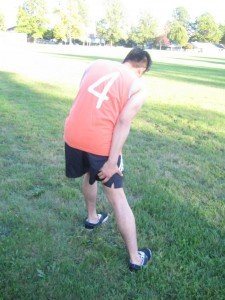Muscle atrophy involves loss of muscular tissue from disease, misuse or injury. Diminished physical activity can result to muscle loss. Atrophy can also occur abruptly with certain ailments or injuries to the muscles or their nerves and the leg muscles are the first to weaken. Luckily, even after muscle loss, leg muscle atrophy can be reversed with physical activity.
https://www.youtube.com/watch?v=TaFwi95j6a4
What are the causes?
- Lack of activity due to injuries, ailments or a sedentary lifestyle
- Malnutrition and alcoholism can decrease muscle growth as well as causing the body to utilize the muscle proteins for energy
- Natural aging process
- Certain conditions that affect the nerves that link to the muscles such as neuropathy, polio or Guillain-Barre syndrome

Atrophy can also occur abruptly with certain ailments or injuries to the muscles or their nerves and the leg muscles are the first to weaken.
Once the leg muscles waste away, the individual will have difficulty walking or stand for prolonged periods.
Remember that the knee, ankle and hip are susceptible for injury or pain as the muscular support required to secure them in place weakens. Visually, the skin starts to sag in the legs as it stretches to support the hanging muscle.
Management of leg muscle atrophy
Increasing the physical activity is a vital factor in the prevention and treatment of muscle atrophy.
It is suggested to engage in aerobic activity weekly along with strengthening workouts. There is emphasis on aerobic activities that utilize the legs such as running, walking, cycling, stair climbing or elliptical training. The strengthening is focused on the hamstrings, quadriceps and calf muscles.
In case the leg muscle atrophy is due to an injury or ailment, a doctor should be seen for treatment. Physical therapy is structured to focus on the specific condition to restore the muscle loss without worsening the condition.

